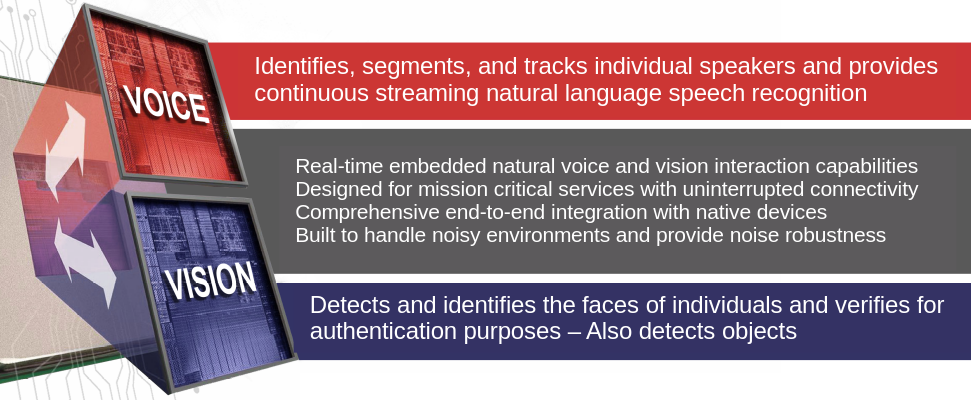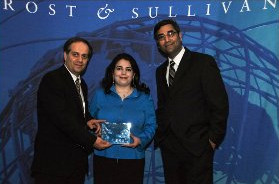-
AudioVisual Recognition
(Embedded)
(Server Based)
(Combination of Speaker, Speech, Face Recognition, and Object Detection and Recognition with a single interface)
-
Large-Vocabulary Speech Recognition
(Embedded)
(Server Based)
Initially available for English, Spanish, Mandarin, Arabic, and German, is now available for 100+ languages
Also includes multilinguagl support and code-switching
(Customizable domain full transcription ~ 300,000+ word vocabulary)
-
Speaker Recognition
(Embedded)
(Server Based)
(Language- and Text-Independent, aka: Speaker Biometrics, Voice Biometrics, or SIV)
Recipient: Frost & Sullivan Award 2011
-
Face Recognition
(Embedded)
(Server Based)
(Face detection and recognition)
-
Object Recognition
(Embedded)
(Server Based)
(Object detection and recognition)
Status: General Availability
The RecoMadeEasy® IVR System is a package developed by
Recognition Technologies, Inc. which currently runs on the Linux
operating system. The IVR system is compatible
with
Dialogic®
telephony T1 and E1 cards as well as their analog cards.
There are quite a few vendors who have developed Interactive Voice
Response (IVR) systems. These systems are either complex libraries
which could be customized by extensive and costly coding or are limited
systems with many shortcomings.
The RecoMadeEasy® IVR system presents an original
software written completely in C++ with complex functionality and
an extremely easy but powerful interface. Through only
simple adjustments to configuration files one may create the most
complex IVR system.
Capabilities
- Logic Graph
A simple web interface is used to design the logic behind the
IVR system for each individual channel. The logic may be shared
by any number of channels. Once the design is done, the system is
ready to go. Your Interactive Voice Response (IVR) System may
be literally up and running within minutes. The design may be
done by any of your personnel and does not require any high
priced programmers. Note that as we mentioned, the logic is
represented by a graph and not a tree. For those who are
familiar with this terminology, they would know that as opposed
to tree-based systems. A graph-based system will allow moving
from any state to any other allowing loops and backward movement
to the top of a logical path.
- Independent Channel Control
A different logic graph may be used for each channel (e.g., each
T1 Channel). In addition, a different logic graph may be used with
different dialed numbers. This allows the sharing of the IVR system
for different purposes depending on the phone number which has been
dialed.
- Recording
The system allows for several types of recording. Recording may be
done on individual or multiple channels while conversation is in
progress.
- Conference Calling
RecoMadeEasy® IVR allows conference calling between
different parties on different channels with the capability of
recording the conversation between parties.
Supported Audio Interface
- All Dialogic JCT cards (T1 and Analog)
- Microphone devices
- Audio File Access
Supported Operating Systems -- Telephony
- CentOS 6.5 Linux
- Previous CentOS Linux versions: 6.4, 6.3, 6.2, 5.7, 5.6, 5.4
Supported Operating Systems -- Other Audio Devices
Linux (both 32-bit and 64-bit versions are supported)
- CentOS 7.3 Linux (Latest)
- Previous CentOS Linux versions: 7.2, 7.1, 7.0, 6.6, 6.4, 6.3
6.2, 5.7, 5.6, 5.4
- Fedora 31 Linux (Latest)
- Previous Fedora Linux versions: 31, 30, 29, 28, 27, 26, 25, 24, 23, 22, 21, 20, 19, 18, 17, 16,
15, 14, 13, 12, 11, 10, 9, 8, 7, 6, Core 5, Core 4, Core 3, Core 2,
Core
- Ubuntu 19.04, 18.04, and 16.04 Linux (Latest)
-->
|


